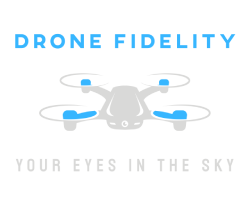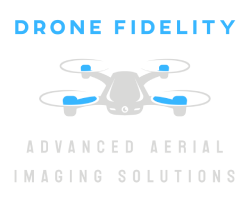Aerial Asset Mapping | Georeferenced Drone Maps
Aerial asset mapping produces georeferenced visuals and measurements that help teams plan, inspect, and document with confidence. Below is a practical overview of what it delivers, how accuracy works, and when it provides the most value.
What Aerial Asset Mapping Provides
At a high level, mapping turns overlapping images into spatial products that line up with real-world coordinates. These products serve as a living base layer for planning, measurement, and recordkeeping. Here are the core deliverables you will see on most projects:
- Orthomosaic basemaps: stitched, top-down imagery aligned to real-world coordinates
- Elevation products: digital surface models for slope, aspect, and Cut/Fill analysis
- 3D outputs: point clouds and meshes for visualization and rough measurement
- Asset indexing: features tagged for inventory, condition, or maintenance status
Accuracy Basics
It helps to separate resolution from accuracy: resolution is the detail you can see, where as accuracy is how well the map aligns to the coordinate system. Small changes in flight height, control, and image geometry can shift both. A few fundamentals:
- Ground sampling distance (GSD): pixel size on the ground; lower GSD yields finer detail
- RTK: improves positioning during flight for better absolute accuracy
- Ground control points (GCPs): surveyed targets used to tighten alignment and reduce error
- Absolute vs relative: absolute aligns to a coordinate system; relative preserves internal consistency for change detection
Typical Outputs and Formats
Format choice depends on your software stack and file size limits. Many teams keep a heavy source file for analysis and a lighter layer for quick viewing or sharing. Common outputs include:
- GeoTIFF orthomosaics for GIS and CAD
- MBTiles or web tiles for lightweight web maps
- JPEG or KMZ overlays for quick viewing
- LAS/LAZ point clouds and OBJ meshes for 3D review
- Shapefile or GeoPackage feature layers for assets and annotations
Planning and Flight Patterns
Flight geometry is the foundation of a strong map. Consistent overlap and camera angles make processing more robust and improve measurement results. Standard patterns include:
- Nadir grid with consistent altitude and overlap for mapping
- Oblique captures along edges to strengthen 3D geometry
- Typical overlap targets: 70% frontlap and 70%–85% sidelap
- Consider GCP placement, reflective surfaces, and moving objects
- Choose stable lighting and wind conditions for consistent results
Where It Helps
Mapping adds value anywhere a current source of truth or repeatable documentation is needed. The use cases below span public works, utilities, and private sites. Typical applications include:
- Municipal asset inventories and right-of-way documentation
- Utility corridor checks and vegetation encroachment screening
- Transportation planning and grading review
- Construction progress basemaps and earthwork comparisons
- Land management, canopy studies, and site stewardship
Limitations and Considerations
Aerial data is powerful, but it has practical limits. Knowing where the method can struggle will help you plan around edge cases and set realistic expectations. Keep the following in mind:
- Dense canopy and overhangs can hide ground features
- Glare, water, and highly reflective materials may reduce texture
- Traffic and moving people introduce artifacts in the mosaic
- Airspace rules, permissions, and privacy policies must be observed
- Data governance matters: define retention, sharing, and access controls
Explore Aerial Asset Mapping in More Detail
If you work with infrastructure, utilities, or site planning, a georeferenced view can speed decisions and improve documentation. See how mapping outputs integrate with your GIS and design tools.
DRONE FIDELITYTM is a Veteran-Owned Small Business (VOSB) and FAA-certified Drone Service Provider (DSP) that specializes in Advanced Aerial Imaging SolutionsTM. Based in Gaithersburg, MD and serving the greater Washington Metropolitan Area, we deliver high-accuracy inspections, measurement, mapping, and documentation for industry professionals.

